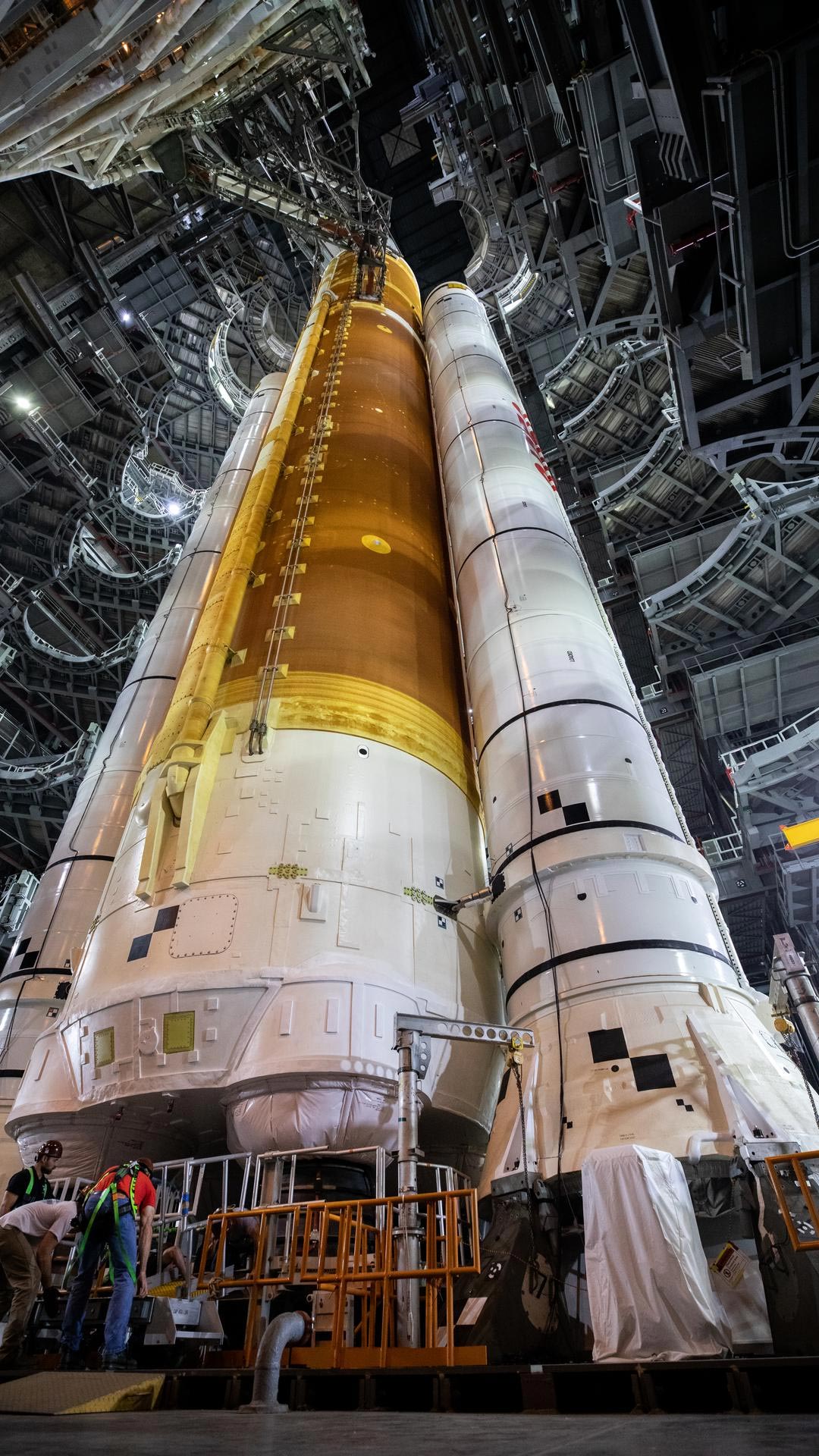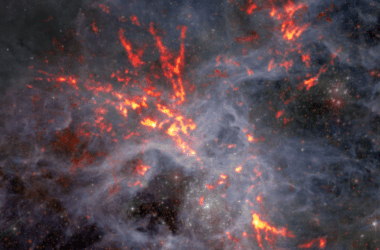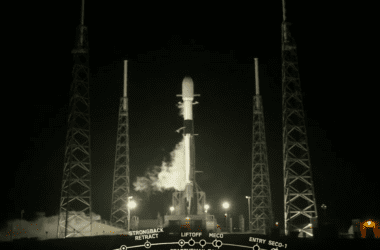
Sur cette vue en plongée de la baie haute 3 du bâtiment d’assemblage des véhicules du Centre spatial Kennedy de la NASA en Floride, toutes les plateformes de travail qui entourent le système de lancement spatial Artemis I (SLS) et le vaisseau spatial Orion sont entièrement rétractées le 16 mars 2022. La pile Artemis I au sommet du lanceur mobile roulera jusqu’au complexe de lancement 39B sur le transporteur à chenilles 2 pour une répétition générale avant le lancement. Crédits : NASA/Glenn Benson
;” data-gt-translate-attributes=”[{” attribute=””>NASA’s new Moon rocket stands poised inside Kennedy Space Center’s iconic Vehicle Assembly Building ahead of its first journey to the launch pad. Comprised of NASA’s Space Launch System (SLS) rocket and Orion spacecraft, and sitting on its mobile launcher, the Artemis I Moon-bound rocket is ready to roll March 17 to Launch Complex 39B for its wet dress rehearsal test targeted to begin on April 1.
The dress rehearsal will demonstrate the team’s ability to load more than 700,000 gallons of cryogenic, or super-cold, propellants into the rocket at the launch pad, practice every phase of the launch countdown, and drain propellants to demonstrate safely standing down on a launch attempt. The test will be the culmination of months of assembly and testing for SLS and Orion, as well as preparations by launch control and engineering teams, and set the stage for the first Artemis launch.
The uncrewed Artemis I mission is the first flight of the SLS rocket and Orion spacecraft together. Future missions will send people to work in lunar orbit and on the Moon’s surface. With the Artemis missions, NASA will land the first woman and the first person of color on the Moon and establish long-term exploration in preparation for missions to Mars. SLS and Orion, along with the commercial human landing system and the Gateway that will orbit the Moon, are NASA’s backbone for deep space exploration.
Live coverage for rollout begins at 5 p.m. EDT and will include live remarks from NASA Administrator Bill Nelson and other guests. Coverage will air on NASA Television, the NASA app, and the agency’s website.



